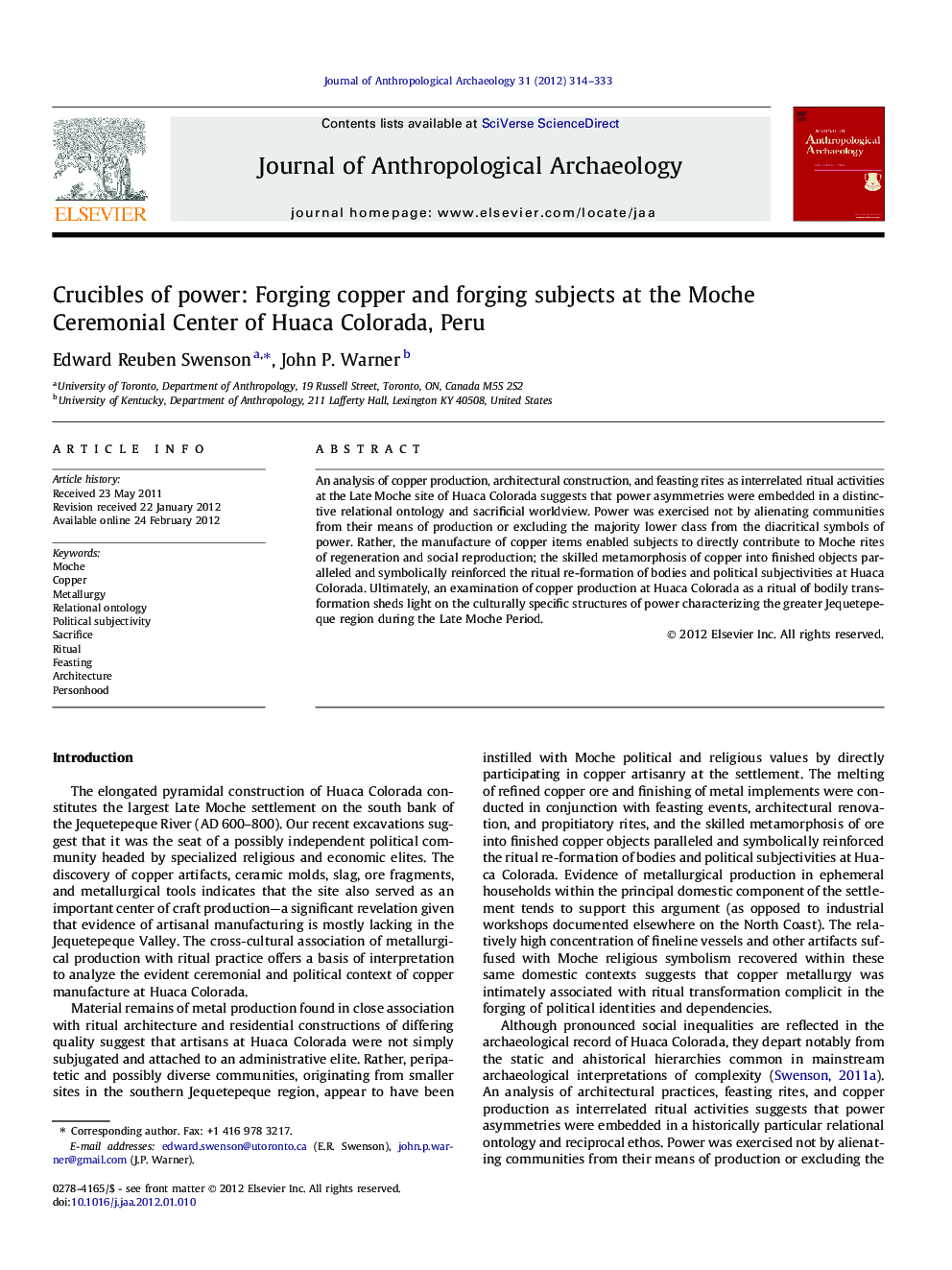| Article ID | Journal | Published Year | Pages | File Type |
|---|---|---|---|---|
| 1034991 | Journal of Anthropological Archaeology | 2012 | 20 Pages |
An analysis of copper production, architectural construction, and feasting rites as interrelated ritual activities at the Late Moche site of Huaca Colorada suggests that power asymmetries were embedded in a distinctive relational ontology and sacrificial worldview. Power was exercised not by alienating communities from their means of production or excluding the majority lower class from the diacritical symbols of power. Rather, the manufacture of copper items enabled subjects to directly contribute to Moche rites of regeneration and social reproduction; the skilled metamorphosis of copper into finished objects paralleled and symbolically reinforced the ritual re-formation of bodies and political subjectivities at Huaca Colorada. Ultimately, an examination of copper production at Huaca Colorada as a ritual of bodily transformation sheds light on the culturally specific structures of power characterizing the greater Jequetepeque region during the Late Moche Period.
► We analyze Moche copper production as rituals of sacrifice and bodily transformation. ► An analysis of metallurgy reveals the distinctive relational ontology of the Moche. ► Metal crafting and architectural renovation created Moche political subjectivities.
